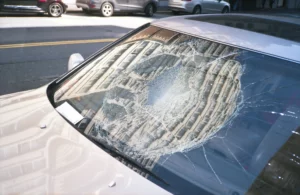When most people think of a rear-end accident, they assume the driver in the back is automatically at fault. After all, drivers are expected to maintain a safe following distance. While that’s often true, the reality is more complicated. Rear-end accident liability isn’t always clear-cut—and proving who is truly responsible can determine the outcome of your injury claim. “rear-end accident liability”
In this guide, we’ll explore why liability in rear-end crashes can be complex, what factors come into play, and how an experienced lawyer can help protect your rights.
Why Rear-End Accidents Are So Common
Rear-end accidents are among the most frequent car crashes in the U.S., often happening at stoplights, intersections, and during sudden traffic slowdowns. Common causes include:
- Distracted driving (texting, eating, or adjusting controls)
- Following too closely (tailgating)
- Sudden braking by the lead vehicle
- Poor weather conditions that reduce stopping ability
- Mechanical failures such as faulty brakes
While the driver in the rear is often presumed at fault, there are situations where that presumption doesn’t hold.
When the Rear Driver May Not Be at Fault
1. Sudden and Unreasonable Stops
If the front driver brakes unexpectedly without reason (for example, slamming on the brakes in the middle of an open road), the rear driver may not be entirely at fault.
2. Broken Brake Lights
If the lead car’s brake lights aren’t working, the rear driver may not have had a fair warning to stop.
3. Hazardous Road Conditions
Poorly maintained roads, missing signage, or debris on the road can shift liability to municipalities or third parties responsible for road safety.
4. Multi-Vehicle Pileups
In chain-reaction accidents, assigning liability becomes much more complicated. Sometimes multiple drivers share responsibility.
How Liability Is Determined in Rear-End Accidents
Determining liability in rear-end accidents often requires a thorough investigation. Factors considered include:
- Police reports: Officers at the scene document their observations and may cite a driver for traffic violations.
- Witness statements: Third-party accounts can shed light on sudden stops, speeding, or reckless driving.
- Traffic camera or dashcam footage: Video evidence is invaluable for showing the sequence of events.
- Accident reconstruction experts: These professionals analyze vehicle damage, skid marks, and crash dynamics to establish fault.

Shared Liability: Comparative and Contributory Negligence
Many states apply rules of comparative negligence in rear-end accident cases. This means more than one party may share responsibility. For example:
- If the lead driver made an unsafe stop but the rear driver was also tailgating, fault could be split.
- In some states, if you’re found even slightly at fault, your compensation may be reduced—or barred entirely (in contributory negligence states).
Because of these legal nuances, it’s risky to assume rear-end accidents are straightforward.
Why Insurance Companies Complicate Rear-End Claims
Insurance companies often try to take advantage of the presumption that the rear driver is at fault. They may:
- Deny legitimate claims if you were the rear driver
- Minimize payouts by blaming both parties
- Pressure you into quick settlements that don’t reflect the true value of your case
This is why having legal representation is essential. A lawyer can gather evidence, negotiate with insurers, and fight for fair compensation.
What Compensation Can You Claim?
If you’ve been injured in a rear-end accident, you may be entitled to compensation for:
- Medical bills and ongoing treatment costs
- Lost income and reduced earning capacity
- Pain and suffering
- Property damage
- Long-term rehabilitation needs
The amount depends on the severity of your injuries and the strength of your case.
How a Lawyer Can Help in Rear-End Accident Cases
Rear-end accident cases may seem straightforward, but proving liability often requires skill and strategy. A lawyer can:
- Investigate the accident scene thoroughly
- Gather witness testimony and expert reports
- Challenge false assumptions of fault
- Handle communications with insurance companies
- Represent you in court if necessary
With professional legal help, you stand a far better chance of recovering the full compensation you deserve.
Conclusion: Don’t Assume Liability Is Simple
Rear-end accidents may be common, but liability is rarely as clear-cut as it seems. Whether you were the lead driver or the one in the rear, your rights depend on the details of the crash, the evidence available, and how your case is presented.
If you’ve been involved in a rear-end accident, don’t leave your future to chance. Get the legal guidance you need today. Start by getting a Free Case Evaluation.

